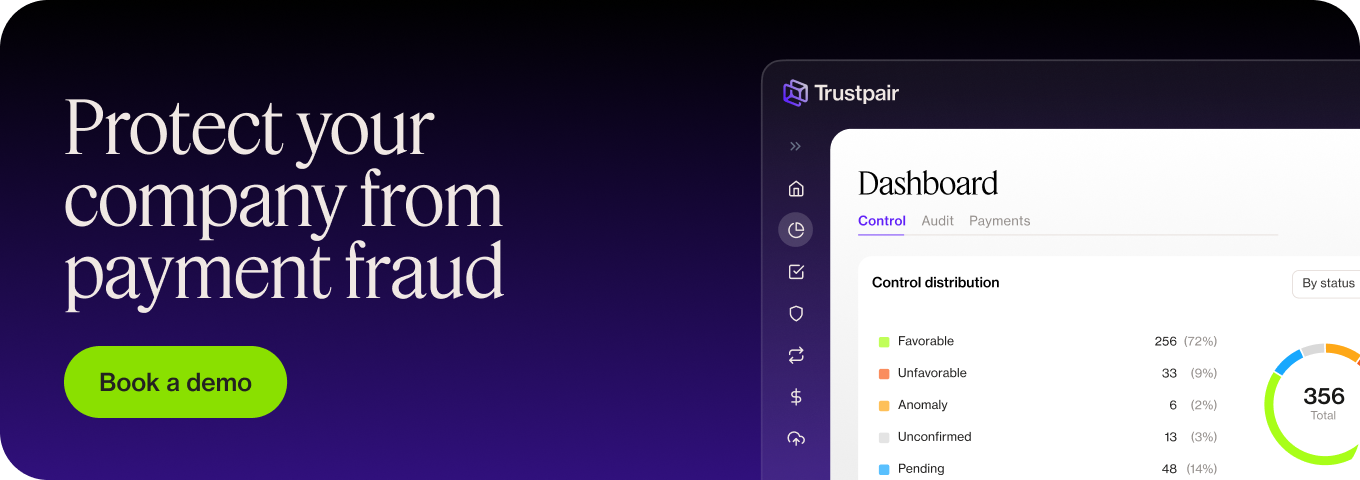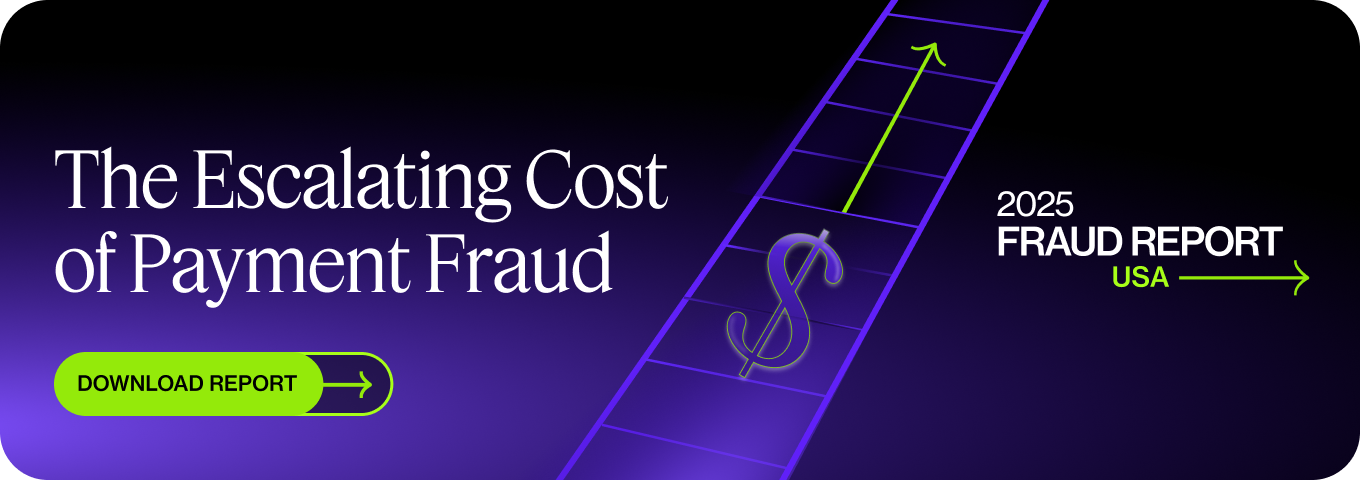Despite the clear advantages, only 39% of businesses have currently automated their accounts payable process. This means that almost two-thirds of organizations in the US are missing out on error-free, quick, and efficient days in the office. More concerning, perhaps, is that manual accounts payable processes increase the risk of fraud. In this piece, we’ll show you how to make accounts payable easy and secure.
Trustpair helps you protect your accounts payable process by securing your payment chain through continuous account validation. Contact an expert to learn more!
What are accounts payable?
Accounts payable is one of the most important functions in business finance.
A definition of accounts payable
Accounts payable, sometimes shortened to AP, describes all of the short-term debt your business owes. From payments to suppliers for goods already received, to contractor wages and subscriptions.
Accounts payable ‘debts’ are usually due within 1-3 months, calculated on a monthly basis. This ensures that all of your third parties get paid out on time, promoting good relationships with suppliers. Longer-term debts that are due within approximately a year or longer are typically listed as liabilities on your financial statements.
Accounts payable is one section of the wider accounting system, so it’s important to protect this entire function against errors and accounts payable fraud.
Accounts Payable vs Accounts Receivables
On the flip side of accounts payable are accounts receivables (AR). These describe all of the short-term funds owed to your business, usually from customers.
From the time that your goods and invoice are sent out to the time payment gets made – these finances count as accounts receivables. The accounts receivable process consists of simply waiting for the money after sending your invoice – and perhaps sending out a late payment reminder every once in a while. In contrast, accounts payable requires more stringent checking.
How does the accounts payable process work?
Your accounts payable cycle dictates how efficient your finance department runs; is it a slick operation or are you always struggling to keep up?
On first impressions, the accounts payable process might sound simple. However, as the business scales, you may have 50-60 different vendors to pay every month. As such, keeping up with each account, and how far along it sits within the process, becomes harder.
Step-by-step workflow for accounts payable
Here’s a (simplified) version of the workflow for a typical accounts payable process:
- Complete a purchase order
- Receive the goods and a shipping report
- Receive and process supplier invoice
- Pay supplier (hopefully – on time!)
Purchase order
Not all companies work with purchase orders, but they can help with regard to budgeting. Purchase requisition forms are internal documents that are typically sent from department heads to finance. They are like a letter of intention – giving advanced warning to get approved by the budget.
Once approved, purchase orders are the external, legally binding documents between your company and the suppliers. This document details the timeline for delivery, as well as the total amount and breakdown of goods.
Receive goods and shipping report
Once the goods have been received, your team will be required to check that everything arrived in good condition. Typically, AP departments complete two or three-way matching; scanning the purchase order against the shipping document (and sometimes the invoice), line-by-line. This way, it’s easy to see if anything is missing.
Receive and process supplier invoice
Receiving the invoice can happen in two ways;
- With paper
- Digitally
Processing paper invoices is usually a manual process, whereas digital invoices can flow through your integrated systems more smoothly. Finance automation during this stage can be beneficial since it removes the risk of human error and can speed up the entire accounts payable process.
Pay the supplier
The final stage in the accounts payable cycle is paying your supplier. Here, you’ll have to ensure that each account receives the right amount within the time specified.
Most vendors give between 30-90 days to pay their outstanding invoices – however, some request immediate payment on receipt. Either way, in order to build the best rapport with your merchants and try to score a discount, early payments are always appreciated.
Challenges of the AP process
Some of the most common challenges for teams looking to optimize their AP process include:
- Accuracy
- Fraud risks
- Tracking accounts
Accuracy
When it comes to getting the AP process right, accuracy could be the top factor to manage. It relies on not only checking that you’ve received your goods, but that all of the calculations in each document (the purchase requisition form, purchase order, and invoice) are correct. This should help prevent fraudulent transactions from penetrating your business.
And, if you’re working with suppliers from overseas, tax calculations may vary too. So it’s important to manage the accuracy of your documents with detailed staff or automated software, in order to achieve accuracy across multiple locations.
Fraud risks
As with any system that relates to money, your accounts payable process could be vulnerable to fraudsters.
In particular, internal fraud risks are higher with AP steps like invoice processing, since many companies require staff to manually approve payments. At this stage, rogue employees could change the bank account details or ‘skim’ some money from accounts.
While managing fraud risks is a challenge, the segregation of duties (also known as the four eyes principle) splits the responsibility between more than one member of staff. This makes it harder for individuals to get away with accounting malpractice without being caught.
Organizations can also benefit from working with anti-fraud programs, which leave no room for manual intervention. For example, platforms like Trustpair match vendor account details to financial and geographical data, constantly authenticating all third parties. We secure the payment chain, blocking any attempts to pay invalid accounts which don’t match up.
To learn more about corporate fraud risks, download our latest fraud report.
Tracking accounts
Have early payments always been just an idea for your AP team? By optimizing your process, the idea can become a reality.
If you want to work without software, then setting up recurring payments through direct debits can guarantee that your vendors are paid on time, and reduce the risk of invoice fraud. However, this relies on paying the exact same amount each month for a set period – which might not be reflected in your orders.
Therefore, specific accounting software might be a better option for companies that are more agile in their accounts payable. This way, early payment discounts can still be achieved, while product ordering varies from month to month and without more hours worked by your employees.
How can you improve your AP process?
For most businesses, improving your accounts payable process means streamlining it so that each of the parts takes less time or less involvement from team members. But it should also be about making the process more efficient, more secure, and fraud-proof.
Use a single automation tool to streamline processes
Automation tools can vet your suppliers and onboard them into your payment systems. Alternatively, platforms can capture the data on your documents with OCR technology and analyze the data to determine your next steps. Others automatically track your accounts or remind you to pay batches of invoices, all at once.
But here’s the caveat; attempting to work on individual steps within the accounts payable process leads to a huge workload. Instead, a holistic approach should be used in order to improve the entire accounts payable process. This tool should help your AP department to save time and money.
Likewise, Trustpair works as an added layer of protection against fraud. Trustpair prevents payment fraud by digitizing third party operations as part of risk management practices.
The benefits of automation for your AP process
In reference to all of the challenges associated with accounts payable, improving the process with financial automation can:
- Ensure accuracy
- Reduce the risk of fraud
- Make tracking easier
Ensure accuracy
The best way to ensure accuracy and reduce errors is to integrate procurement and AP functions. This way, there’s no need to treat or transfer the data entry from one phase to another. It means the flow of accurate data is uninterrupted, and there’s a much lower chance of corruption or duplicate info.
Automated programs also ensure accuracy because they reduce the risk of human errors. With data collection, analysis, and reporting all covered by a software program, your people benefit from the reliability and confidence of the information in front of them.
Reduce the risk of fraud
A digital finance program increases accountability within your AP processes – you’ll know exactly who has authorized which payment, and when. This is an amazing deterrence against internal fraudsters.
To go further in the automation domain, some anti-fraud platforms with a focus on payments, like Trustpair, are literally built to prevent AP fraud. Features such as risk analysis, integrations with ERPs and comprehensive audits control AP operations. Moreover, Trustpair’s AI and machine-learning algorithms are used to predict and protect against threats to your payment ecosystem.
Easier account tracking
Automated programs work to make account tracking easier because most often, the information that you need can be displayed in a single dashboard.
This makes it easier for members of your AP team to identify the information they might need, and follow internal controls. It’s simple to figure out exactly what the next steps are for each vendor account.
Demo Trustpair to learn how your business can effectively prevent fraud in accounts payable.
To conclude
Accounts payable is the reimbursement of suppliers for providing goods and services, as per payment terms. It involves the reconciliation of orders with deliveries through the ERP system, and paying invoices. By streamlining the AP system, you can pay on time or early and benefit from cost savings.






